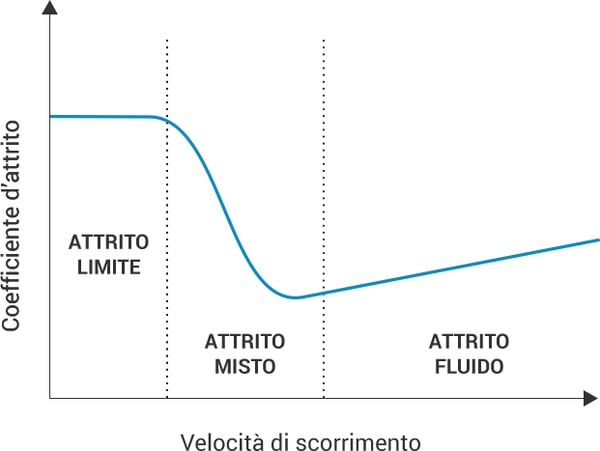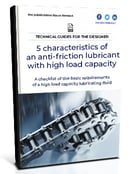
Frictional wear? Here's how to reduce it!
Wear caused by friction represents the progressive and continuous loss of material from solid surfaces, in mutual movement and contact, for mechanical reasons.
If not suitably equipped with a uniform lubricating film, any mechanical device can meet such a fate.
This is because friction is the force that opposes the movement of two bodies in mutual contact. Yet, if we interpose a lubricating fluid between them, two different types of friction may be generated.
The first is external friction, deriving mainly from the microscopic contact that is created between the surfaces, which tend to adhere to each other causing deformation of materials and grooves.
The second type is internal friction, existing between the molecules in the lubricating film interposed between the materials in friction (also called viscosity). This represents one of the most important variables in the adequate formulation of lubricating fluids in relation to the variables present in the tribosystem.
Coefficient of friction and the tribosystem
The tribosystem is the set of conditions and variables that immediately affect the friction process.
Its definition rests on four fundamental concepts:
- The type of materials under friction, the metals, plastics, elastomers and their surface roughness
- Operating parameters, such as workload, specific pressures, sliding speed, operating temperature
- The parameters of interaction, the friction condition (limit, mixed, fluid), the presence of process fluids (such as powders, acids, bases) and lubricating fluids
- The tribotechnical parameters, friction and wear
The choice of lubricating fluid can significantly affect the duration and efficiency of a mechanical device. Therefore, it is important to investigate and measure the actual conditions in which the tribosystem operates in order to develop the correct functional lubricant fluid for the coefficient of friction.
Reduce the coefficient of friction with synthetic lubricants
One method for identifying how the friction conditions vary in relation to the reciprocal sliding speeds is the use of the Stribeck curve, in which the coefficient of friction is related to the dynamic conditions of the surfaces in contact.

From the image, it is possible to identify three different areas of operation with the relative course of the friction coefficient:
- Friction limit, where the lubricating film is not sufficiently load-bearing to separate the sliding surfaces and the contact between the surfaces occurs regularly, producing an inevitable acceleration of the wear processes – in such conditions, the lubricating fluids are equipped with additives to reduce the coefficient of friction
- Mixed friction, an intermediate condition in which there is a partial separation of the surfaces in mutual contact, combined with areas of total absence of the lubricating film, where we have a progressive lowering of the dynamic coefficient of friction with an increase in speed, due to the progressive establishment of the lubricating carrier film
- Fluid friction, as the total separation of the contact surfaces upon the coefficient of friction stabilising at a higher value whilst the tribometric results of friction and wear remain significantly reduced, representing the optimal situation for maintaining the tribosystem in a state of full efficiency
The constitution of a persistent lubricating film under all friction conditions represents the result to which every lubricant formulation must strive.
To know how and when to use a synthetic lubricant and, above all, which one to choose, download our free guide!
5 characteristics of an anti-friction lubricant with high load capacity
A checklist of the basic requirements of a high-load-capacity lubricating fluid
Heavy-duty lubricants
A complete guide to the key characteristics

A complete identikit of a lubricating fluid with high load capacity and low coefficient of friction



